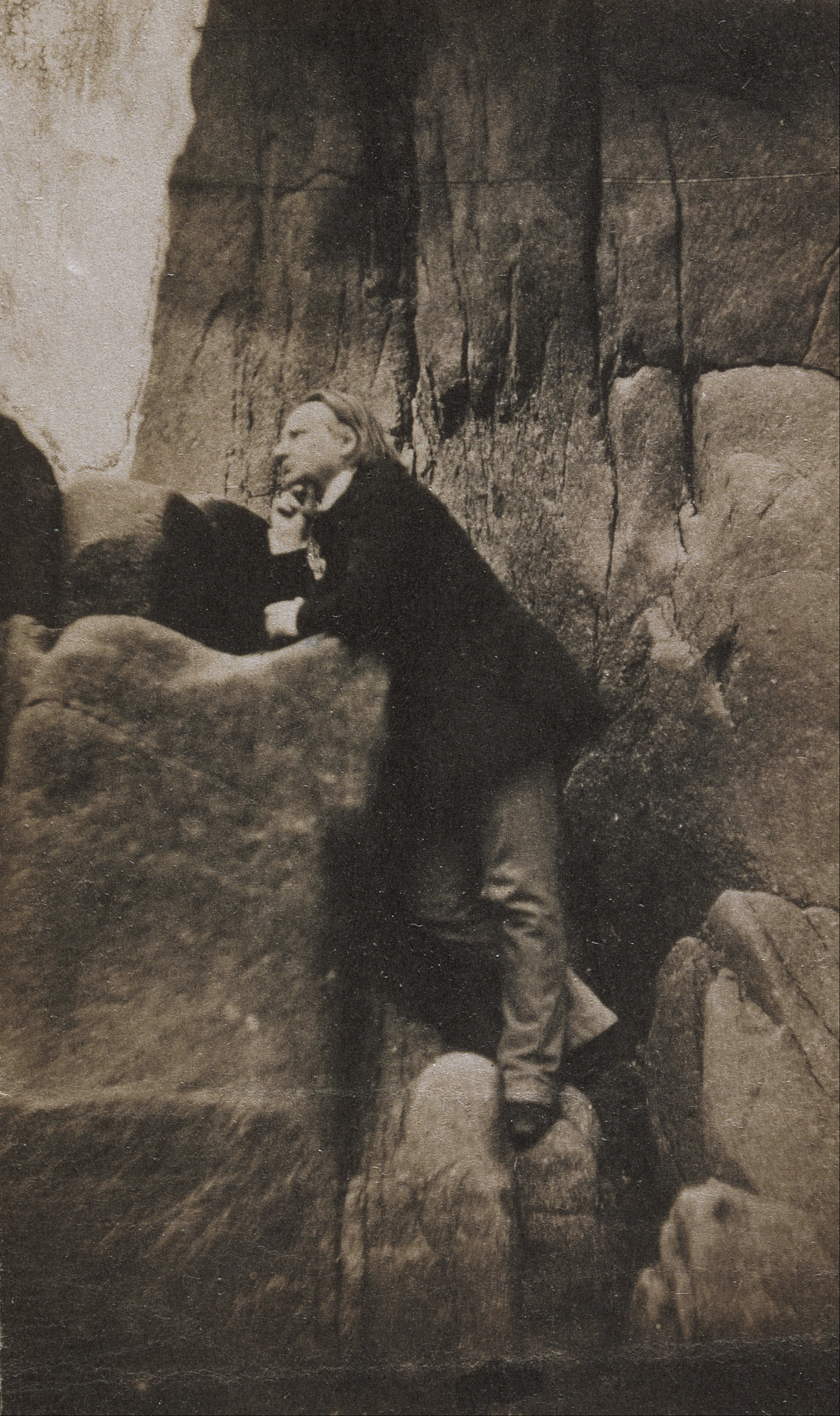
Charles Hugo (France, 1826–1871)
Victor Hugo dans le rocher des Proscrits (Victor Hugo dans le rocher des Proscrits)
Around 1853
Salted paper print from a collodion glass negative
10.3 x 6.3 cm.
Don Mme Marie-Thérèse and André Jammes, 1984
Collection of Musée d’Orsay, Paris, France
In shaping his own image as the leading opponent of Napoleon III, Victor Hugo was a pioneer of political photography, long before it revolutionized communication and the media. "So this is the photographic revolution we want to make (while we wait)" to put an end to the Second Empire, he wrote in 1853, when his son Charles printed this salted paper print.
Realizing the power of this new medium to make absence present, the writer set himself on the rock of Les Proscrits, looking out over France from the Channel Island of Jersey, where he had gone into exile.
This photograph, which was to have been published in a book that the publishers decided not to publish for fear of displeasing the Emperor, was instead placed in the album reserved for family and friends.
Jersey, "a piece of France that fell into the sea and was picked up by England", as Hugo put it, is a little paradise for exiles: life here is cheaper than in London, and its proximity - just 22 kilometres - to the Cotentin peninsula means easy communication with the mother country.
Thus, before Hugo and his republican "brothers", the island successively welcomed Huguenots during the Wars of Religion, Chateaubriand and royalists during the French Revolution, Spanish, Italian and Polish nationalists in the years 1820-1830. They were joined in 1852 by some 200 Frenchmen banished by Louis-Napoléon. Hugo is not the least photogenic of them all!










